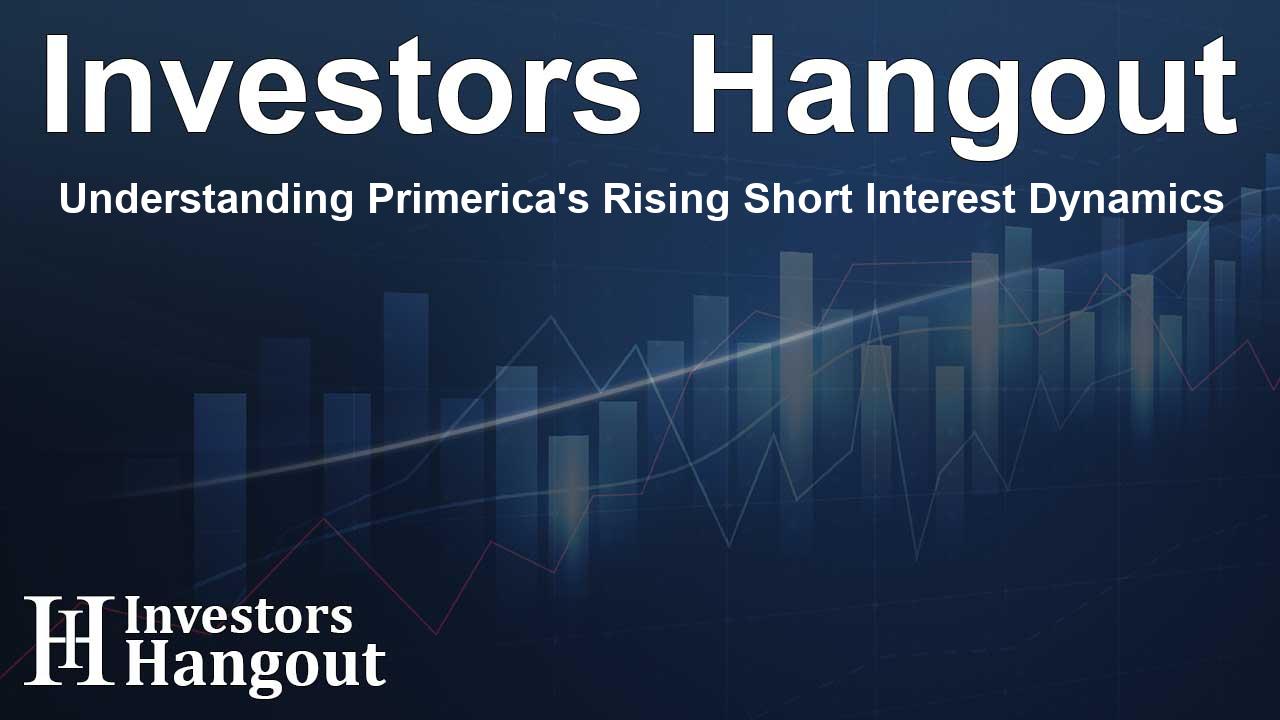Understanding Primerica's Rising Short Interest Dynamics

Understanding Primerica's Short Interest Trends
Primerica (PRI) has recently seen a notable increase in its short percent of float, which has risen by 13.42% since its last report. This means that currently, Primerica has 438 thousand shares sold short, equivalent to approximately 1.69% of all its publicly tradable shares. Given the average trading volume, traders would need about 3.42 days to cover their short positions.
Importance of Monitoring Short Interest
What is Short Interest?
Short interest refers to the cumulative number of shares that have been sold short but remain open, meaning they have not been covered or closed out. In simple terms, when traders engage in short selling, they sell shares they do not own with the expectation that the stock's price will decline. If their expectation holds true and the stock price decreases, they can buy back the shares at a lower price, thus profiting from the difference. Conversely, if the stock price rises, they face potential losses.
Market Sentiment Indicator
Short interest serves as a crucial indicator of how the market perceives a particular stock. An uptick in short interest often signifies that investors are adopting a more bearish outlook, while a decline indicates a bullish sentiment. Consequently, watching this metric can provide investors insights into prevailing market dynamics.
Analyzing Primerica's Short Interest Over Time
Recent Trends
The data suggests that the percentage of shares sold short for Primerica has notably increased compared to previous reports. While this uptick could imply bearish sentiment, it's essential to recognize that it doesn’t automatically predict a decline in the stock price. Nonetheless, active traders should be cognizant of the growing short interest, as it can influence trading behavior in the market.
Comparison with Industry Peers
Peer Analysis
Peer comparison is a valuable approach for evaluating a company's performance relative to others in the same sector. Typically, peers are identified based on similar attributes such as industry, size, and financial metrics. According to the latest comparative data, Primerica's peer group reports an average short interest of 2.32% of float, indicating that Primerica's own short interest is lower than that of most of its competitors.
Rising Short Interest: A Potential Positive Signal
Understanding the Bullish Angle
Interestingly, increasing short interest can sometimes be perceived as a bullish signal for a stock. This is particularly true in contexts where a short squeeze occurs, leading to rapid buying as traders look to cover their short positions, which can potentially drive the stock price upward. Understanding these market movements can provide savvy investors with advantageous trading opportunities.
Conclusion
The fluctuations of short interest in companies like Primerica signify the complexity of market perceptions. Monitoring these trends can provide investors with key insights and help them make well-informed decisions. As these numbers evolve, it becomes increasingly crucial for investors to stay aware of both the technical and emotional aspects influencing stock trading.
Frequently Asked Questions
What is Primerica's current short interest percentage?
Primerica currently has a short interest percentage of 1.69% of all regular shares available for trading.
How does short selling work?
Short selling involves selling shares that one does not own, with the expectation that the stock price will decrease, allowing the trader to buy back at a lower price and profit.
Why is monitoring short interest important?
Monitoring short interest is crucial as it reflects investor sentiment. A rise can indicate bearish sentiment, while a drop may suggest bullish sentiment.
How does Primerica's short interest compare to its peers?
Primerica's short interest is lower than the average of its peer group, which stands at about 2.32% of float.
Can high short interest be good for a stock?
Yes, an increase in short interest can potentially lead to bullish movements, especially if a short squeeze occurs, driving up the stock price as traders cover positions.
About The Author
Contact Evelyn Baker privately here. Or send an email with ATTN: Evelyn Baker as the subject to contact@investorshangout.com.
About Investors Hangout
Investors Hangout is a leading online stock forum for financial discussion and learning, offering a wide range of free tools and resources. It draws in traders of all levels, who exchange market knowledge, investigate trading tactics, and keep an eye on industry developments in real time. Featuring financial articles, stock message boards, quotes, charts, company profiles, and live news updates. Through cooperative learning and a wealth of informational resources, it helps users from novices creating their first portfolios to experts honing their techniques. Join Investors Hangout today: https://investorshangout.com/
The content of this article is based on factual, publicly available information and does not represent legal, financial, or investment advice. Investors Hangout does not offer financial advice, and the author is not a licensed financial advisor. Consult a qualified advisor before making any financial or investment decisions based on this article. This article should not be considered advice to purchase, sell, or hold any securities or other investments. If any of the material provided here is inaccurate, please contact us for corrections.
